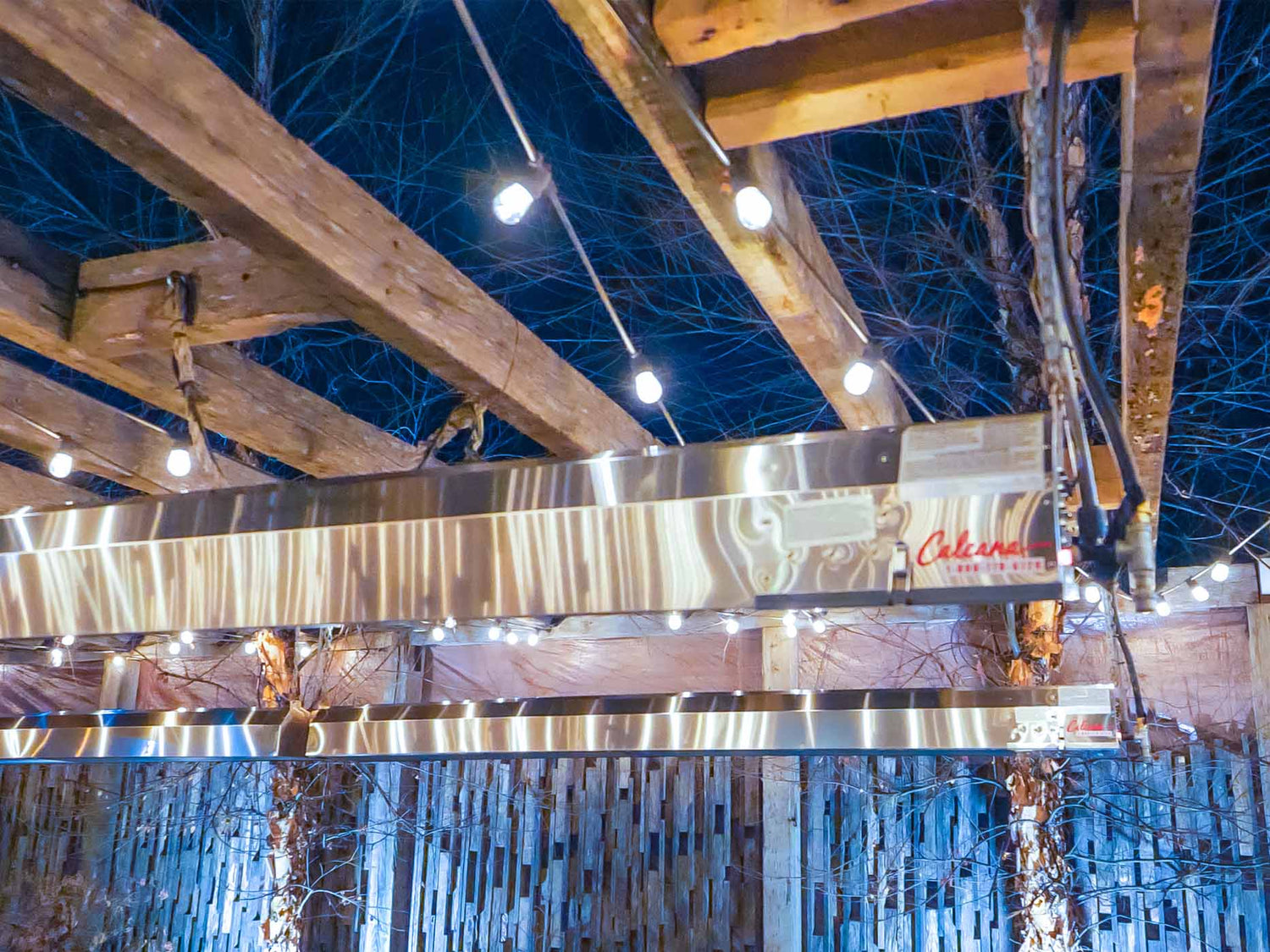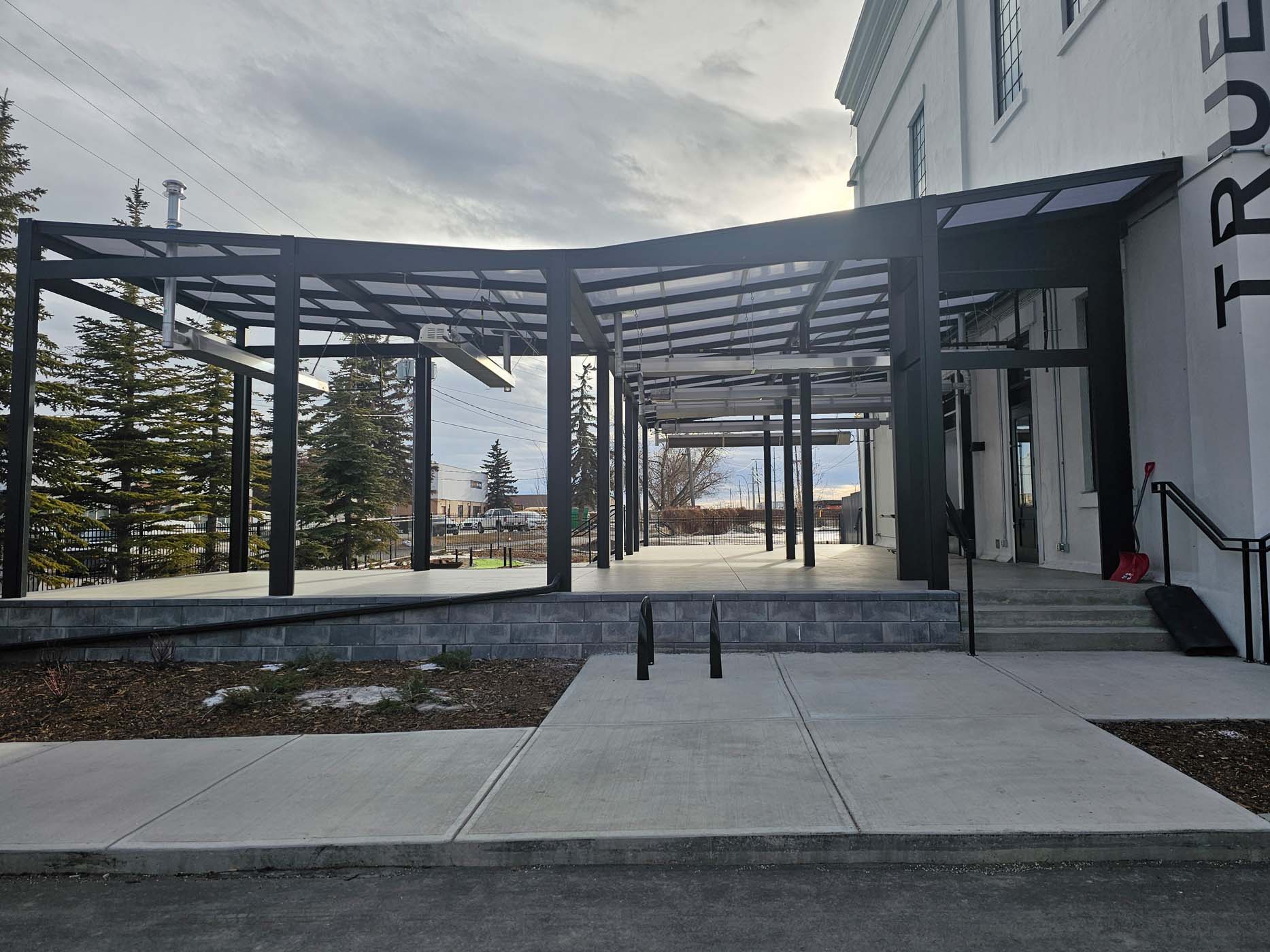When temperatures dip and the chill settles in, there’s nothing more comforting than a steady, radiant source of warmth. For many homeowners and business owners, infrared heaters have become the go-to solution for efficient, comfortable heating. But a common question arises, is it safe to leave an infrared heater on overnight?
This question isn’t just about comfort, it’s about safety, energy use, and peace of mind. Whether you’re using an infrared patio heater, garage unit, or indoor model, understanding how these systems operate and what makes them safe (or risky) for continuous use is essential.
In this in-depth guide, we’ll explore how infrared heaters work, safety considerations for overnight operation, the differences between gas and electric models, and the practical steps you can take to enjoy all-night comfort responsibly.
Is It Safe to Leave an Infrared Heater On Overnight? Understanding the Risks, Safety Features, & Best Practices
Before we discuss whether leaving one on overnight is safe, it’s important to understand how infrared heaters function.
Unlike forced-air systems or convection heaters that warm the air, infrared heaters use radiant heat, similar to how the sun warms your skin on a cool day. They emit infrared radiation that directly heats objects, people, and surfaces within their range, creating a steady and natural warmth that doesn’t rely on circulating air.
Infrared heaters emit electromagnetic waves that travel through the air and are absorbed by nearby surfaces, which then re-radiate that warmth. This makes them ideal for:
-
Outdoor patios and restaurant seating
-
Garages, workshops, and industrial areas
-
Residential sunrooms
-
Commercial spaces that need consistent comfort
Because they don’t depend on air movement, infrared heaters maintain consistent warmth even in open or drafty areas.
There are two primary types:
-
Gas-powered infrared heaters (like Calcana) that use natural gas or propane for combustion.
-
Electric infrared heaters that convert electricity directly into radiant energy.
Both types are efficient, but their safety considerations differ, particularly when left running for long periods like overnight.
Is It Safe to Leave Heaters On Overnight?
The short answer: Yes, it can be safe, but only if done correctly.
Infrared heaters, when properly installed, ventilated, and maintained, are among the safest heating technologies available. However, “safe” doesn’t mean “risk-free.” The answer depends on:
-
The type of heater (gas vs. electric)
-
Where it’s installed (indoor vs. outdoor)
-
How it’s maintained and used
-
The built-in safety features of the unit
Electric Infrared Heaters
High-quality electric infrared heaters often come equipped with safety features such as:
-
Overheat protection sensors
-
Tip-over switches (for portable models)
-
Automatic shut-off timers
-
Cool-to-touch exteriors
These make them generally safe for overnight use in controlled indoor environments, especially when placed away from flammable materials and used on a dedicated circuit.
Gas Infrared Heaters
Gas-powered infrared heaters (like Calcana’s) are typically permanently mounted and vented, meaning they’re designed for continuous use in garages, patios, and commercial settings. They are built with:
-
Thermostatic controls for automatic cycling
-
Flame monitoring systems
-
Oxygen depletion sensors (for enclosed spaces)
-
Secure venting for safe combustion gas exhaust
Because they’re fixed installations, the risk of accidents is significantly reduced compared to portable heaters. However, ventilation and proper installation are critical for safety.
Safety Features That Allow for Overnight Operation
Infrared heaters have evolved significantly in safety technology. Let’s look at the key features that make them reliable for extended or overnight use.
1. Thermostatic Controls
Most modern infrared systems are thermostat-controlled, allowing them to cycle on and off as needed. This prevents overheating and energy waste while maintaining a consistent temperature.
2. Flame Supervision & Gas Safety Systems
In gas models, sensors continuously monitor the flame. If it goes out unexpectedly, the gas valve automatically closes, eliminating the risk of unburned gas buildup.
3. Overheat Protection
Built-in thermal cutoffs prevent the unit from reaching unsafe temperatures, shutting down the heater before it can overheat or cause damage.
4. Secure Installation & Mounting
Mounted infrared heaters (like Calcana’s) are fixed to ceilings or walls, safely out of reach of contact, pets, and clutter, one of the main reasons they can be left running longer.
5. Enclosed Combustion Chambers
In gas units, combustion occurs within sealed chambers, keeping flames away from the surrounding environment and ensuring that all exhaust gases are properly vented.
6. Continuous Low-Level Output Options
Calcana heaters feature modulating controls, allowing you to reduce output down to 50%, ideal for steady, low-intensity warmth overnight without excessive fuel use.
Situations Where Overnight Operation Makes Sense
Infrared heaters are designed to provide long-lasting, stable warmth in a variety of settings, many of which naturally require extended or overnight operation. When used in the right environments and properly installed, leaving your infrared heater on through the night isn’t just safe, it’s smart, efficient, and beneficial.
Here are a few common situations where overnight heating makes perfect sense:
Outdoor Patios
Commercial patios, such as those found at restaurants, breweries, and resorts, are one of the most common places to find infrared heaters running after hours. Even when customers are gone, the gentle radiant heat helps maintain consistent warmth on furniture, walls, and flooring, preventing condensation, frost buildup, or sudden temperature drops that can damage fixtures or materials. For venues that open early in the morning, keeping heaters at a low modulating setting overnight means faster warm-up times and a more inviting environment for early guests.
Garages & Workshops
In residential garages or mechanic shops, the benefits of steady heat extend beyond personal comfort. Overnight heating prevents tools, equipment, and vehicles from being exposed to freezing conditions. Cold metals can contract and collect moisture, potentially causing corrosion or affecting precision machinery. A low, steady output infrared heater, such as Calcana’s CAL Series with modulating control, provides an ideal balance between protection and energy efficiency, ensuring your garage or workspace remains warm without wasting fuel.
Greenhouses & Agricultural Settings
Infrared heat is often used in agriculture because it mimics natural sunlight, providing warmth that’s absorbed by soil, plants, and structures rather than just the air. Running infrared heaters overnight maintains stable temperatures for crops or livestock and helps prevent frost damage during cold nights. With built-in thermostatic and modulating options, operators can maintain exact temperature ranges with minimal supervision.
Industrial or Commercial Facilities
Warehouses, distribution centers, and manufacturing facilities often require continuous or semi-continuous heating. Infrared heaters are ideal for these large open environments because they deliver radiant warmth directly to people and surfaces, even when doors are frequently opening or air movement is high. Leaving these heaters on at reduced levels overnight helps preserve temperature equilibrium, reduce start-up loads in the morning, and lower condensation risks on stored products or equipment.
Hospitality & Recreational Settings
Hotels, sports facilities, and event centers also rely on infrared systems to maintain ambient comfort during off-hours. Since these spaces can experience large swings in temperature between day and night, steady radiant heat helps protect interior finishes, glass, and fixtures while ensuring comfort for staff or early visitors.
In all these cases, infrared heaters’ low maintenance, modulating output, and directional heating capabilities make them an efficient and reliable choice for safe overnight operation, especially when professionally installed and properly maintained.
When You Should NOT Leave It On Overnight
While infrared heaters are built for safety and reliability, there are still situations where continuous operation overnight isn’t advisable. Awareness of these scenarios ensures you get the benefits of radiant heat without taking unnecessary risks.
Unvented or Portable Heaters Indoors
If you’re using an unvented gas heater or a portable infrared unit, leaving it on overnight can be risky. These units may not have sufficient ventilation or advanced flame monitoring systems, and in confined areas, oxygen depletion or carbon monoxide buildup can occur. Always ensure gas-powered units are properly vented and designed for indoor use before considering overnight operation.
Improper Installation
Safety begins with professional installation. A heater that’s incorrectly mounted, wired, or vented poses a hazard no matter how advanced its safety features may be. If your heater is hanging too low, positioned near combustible materials, or not vented correctly, it should never be left running unsupervised.
Lack of Regular Maintenance
Infrared heaters are low-maintenance but not maintenance-free. Dust accumulation, blocked reflectors, or clogged vents can reduce performance and, in rare cases, create safety risks. Before leaving your heater on for long periods, especially overnight, make sure it has been inspected and serviced according to manufacturer recommendations.
Poor Ventilation or Airflow
Even though infrared heaters warm surfaces directly, they still require some air movement for safety and efficiency, particularly gas-powered units. If your space is tightly sealed or lacks ventilation, the heater should be shut off when not in use.
Visible Malfunctions
If you notice any unusual signs such as flickering flames, soot buildup, strange odors, or inconsistent heat output, it’s best to power off the system and have it inspected by a professional before using it again.
Older Models Without Modern Safety Features
If your infrared heater lacks newer safety systems like flame failure sensors, overheat protection, or modulating controls, it’s best to avoid leaving it on overnight. Upgrading to a modern, safety-certified model ensures peace of mind and better energy efficiency.
In short, while modern infrared systems like Calcana’s are engineered for reliable long-term use, caution should always prevail. Safe overnight operation depends on the heater type, installation quality, and the environment in which it’s operating.
Tips for Safe Overnight Use
If your infrared heater is installed and maintained properly, you can safely use it overnight with the right precautions.
Safety Checklist:
-
Ensure your heater is professionally installed and meets local codes.
-
Maintain proper clearance to combustible.
-
Check that venting and airflow are unobstructed.
-
Regularly inspect for gas leaks or corrosion.
-
Use a thermostat or timer to prevent continuous operation at full output.
-
Keep flammable items, fabrics, or papers well away.
With these measures in place, leaving your heater running overnight can be both efficient and safe.
Energy Efficiency & Cost Considerations
One of the strongest advantages of infrared heating, especially for those considering overnight operation, is its remarkable energy efficiency. Unlike traditional forced-air systems that lose energy to ductwork or circulating air, infrared heaters deliver direct, targeted warmth where it’s needed most.
How Infrared Efficiency Works
Infrared heat doesn’t waste energy heating the air, it heats the objects and people within its reach. This means even if a door opens or a breeze passes through, the warmth remains stored in surfaces, not lost to moving air. In open or drafty spaces, that’s a major advantage.
Lower Fuel & Operating Costs
Calcana’s gas-fired infrared heaters, for example, can save up to 40% in fuel costs compared to fan-forced or convection systems. That efficiency comes from radiant transfer, less wasted heat, faster comfort, and fewer cycles to maintain temperature.
Additionally, Calcana heaters use modulating technology that reduces input by up to 50%. This feature is perfect for overnight operation, allowing you to maintain gentle, steady warmth without burning excess fuel or overloading your energy system.
Comparing to Other Systems
-
Electric baseboard heaters: Constantly consume energy to maintain air temperature.
-
Forced-air furnaces: Lose up to 30% of energy through duct inefficiencies and reheating cycles.
-
Infrared heaters: Deliver direct warmth instantly, with minimal energy loss.
Because infrared warmth doesn’t rely on moving air, rooms feel warmer even at lower thermostat settings, meaning you can turn the heat down and still feel comfortable.
Overnight Efficiency in Action
When operating overnight, infrared heaters don’t need to “catch up” in the morning the way convection systems do. This eliminates costly start-up surges, reduces strain on the unit, and extends equipment lifespan.
For businesses, that means lower monthly bills, fewer service calls, and predictable heating performance even in large or open environments. For homeowners, it means comfort through the night without the energy guilt or inflated bills that come from running inefficient systems.
Environmental Impact
Infrared heating also contributes to sustainability goals by reducing total fuel consumption. Gas infrared systems produce fewer emissions per unit of heat delivered, while electric models can integrate with renewable power sources like solar for even greater environmental benefits.
When managed properly, leaving an infrared heater on overnight doesn’t just keep you warm, it helps optimize energy use and long-term operating costs.
Health & Air Quality Considerations
Beyond warmth and efficiency, air quality and occupant health are major concerns when using any heater for long durations, especially overnight. Fortunately, infrared systems offer significant advantages in this area, making them one of the healthiest heating options available.
No Combustion Byproducts Indoors
In vented gas systems like Calcana’s, combustion occurs in a sealed chamber, and all exhaust gases, including carbon monoxide, are safely vented outdoors. This means no fumes, smoke, or harmful emissions ever enter the occupied space.
Electric infrared models go a step further, producing zero emissions during operation. There’s no risk of carbon monoxide or particulate matter, which is a key distinction from portable propane or kerosene heaters that can pollute indoor air.
Preserves Natural Humidity
Unlike convection systems that dry out the air, infrared heaters maintain a balanced indoor humidity level. Because radiant heat warms objects and surfaces, not air, there’s less moisture loss, helping you avoid dry skin, irritated sinuses, and static buildup.
Reduced Circulation of Dust & Allergens
Infrared heating doesn’t rely on fans or ductwork, meaning it doesn’t stir up dust, pollen, or allergens. This makes it an excellent choice for individuals with allergies, asthma, or other respiratory sensitivities.
Gentle, Consistent Warmth
The even, sun-like quality of infrared heat is easy on the body. It promotes better circulation, reduces joint stiffness, and creates a natural warmth that doesn’t fluctuate sharply like forced-air heating. For overnight comfort, this means you wake up feeling refreshed rather than dried out or overheated.
Nearly Silent & Stress-Free Operation
Because infrared systems operate quietly, without fans, blowers, or combustion noise, they’re ideal for environments where peace and rest are important. Whether it’s a restaurant patio, workshop, or home garage, you can enjoy warmth without the distraction of mechanical noise.
Overall Health Impact
Infrared heat is widely recognized as safe, natural, and therapeutic. Many wellness centers even use infrared technology for health applications such as saunas and recovery spaces. When used correctly, infrared heating enhances comfort while supporting healthier air quality, making it perfectly suitable for extended or overnight use.
Maintenance for Safe & Reliable Overnight Operation
Like any appliance, maintenance is key to keeping your heater safe for extended use.
Recommended Maintenance Routine
-
Inspect annually for any signs of corrosion, blockage, or wear.
-
Clean reflectors and emitters for maximum efficiency.
-
Check wiring and connections for signs of overheating.
-
Ensure venting is clean and properly sealed.
Professional servicing once per year ensures your heater continues to run safely, even overnight.
Final Thoughts: Safety Meets Comfort
So, is it safe to leave your infrared heater on overnight? Yes, when it’s the right type of heater, installed properly, maintained regularly, and operated with common sense.
Infrared heaters are designed with modern safety technology to provide steady, efficient warmth in both residential and commercial settings. For homeowners, restaurant owners, or facility managers, the goal is peace of mind: warmth without worry.
With reliable brands like Calcana, you can trust that your heating system is engineered for comfort, control, and safety, even through the night.
If you’re considering upgrading your setup or want guidance on choosing the right heater for continuous operation, contact Calcana today or visit www.calcana.com to learn more about our energy-efficient, customizable infrared heating systems.




Leave a comment
This site is protected by hCaptcha and the hCaptcha Privacy Policy and Terms of Service apply.